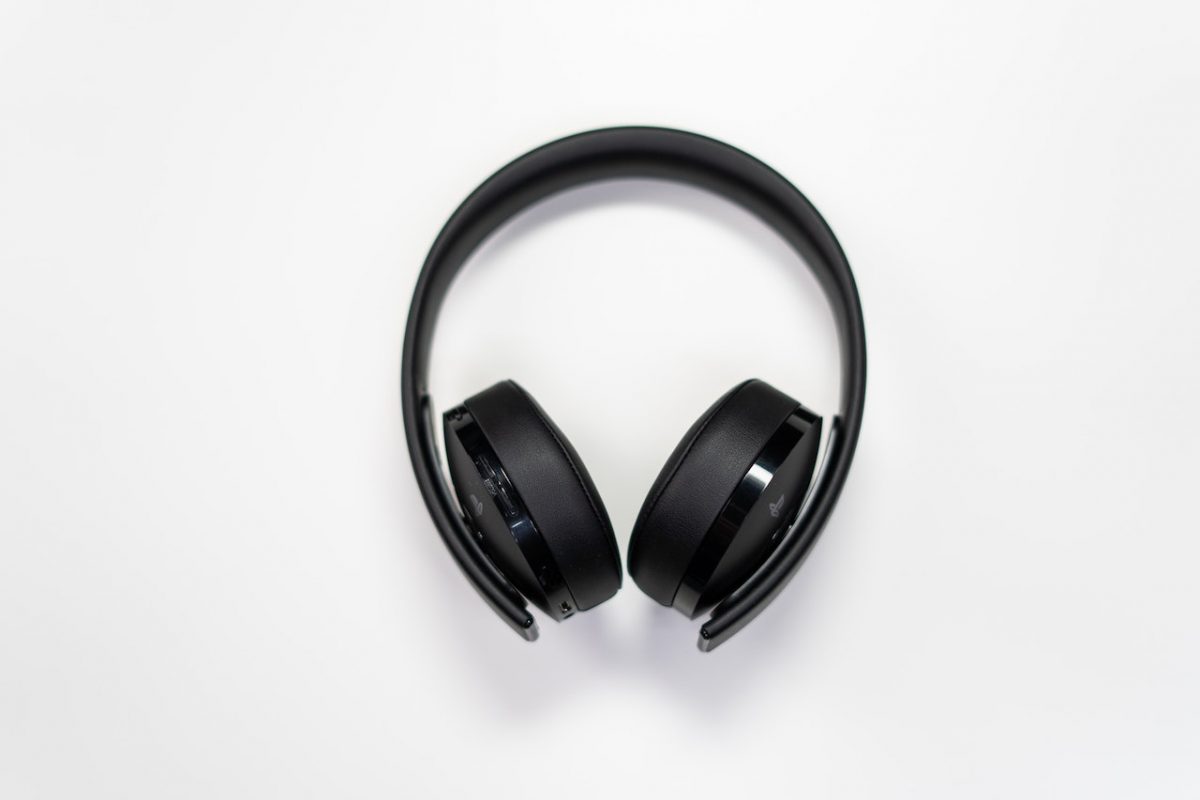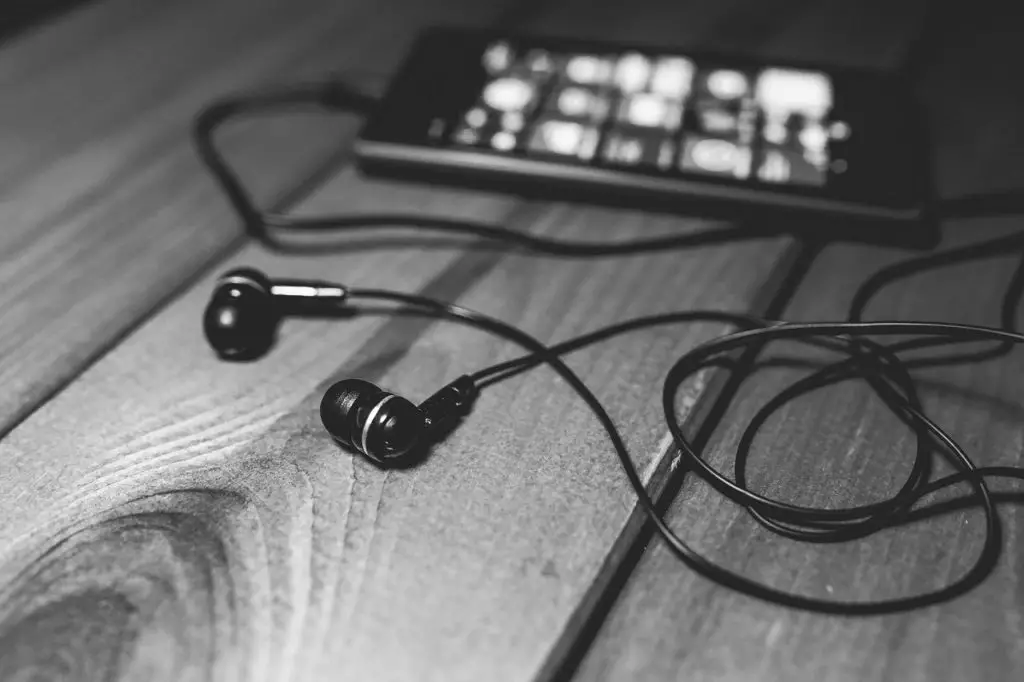Are you looking for headphones that will provide a high-quality listening experience, or do you just need earphones for when you’re on the go?
In this post, we will outline the differences between headphones and earphones, so you can make an informed decision about which type of audio gear is best for you. We’ll also offer some pros and cons for choosing the right headphones or earphones for your needs. So read on to learn everything you need to know about headphones and earphones!
What are the differences between headphones and earphones? The main differences between headphones and earphones are their design, sound quality, and safety considerations. While headphones are worn over the head, earphones are inserted into the ear canal. Earphones may have poorer sound quality due to their smaller drivers but can also offer noise-canceling features. Finally, using earphones at high volumes for extended periods of time can increase the risk of hearing damage. It’s important to consider these factors when choosing between headphones and earphones.
What are headphones?
Headphones are a type of personal audio equipment that is worn over the ears to listen to audio content such as music, podcasts, movies, and more. They consist of two earcups that are connected by a headband, and each earcup contains a speaker driver that produces sound.

Headphones can be wired or wireless, with wired headphones connecting to a device through a cable and wireless headphones connecting through Bluetooth or other wireless technologies. Some headphones also come with additional features such as noise-cancellation technology, built-in microphones for phone calls, and touch controls for easy access to playback and volume controls.
Headphones are popular for listening to music on the go, in public places, or when you want to enjoy audio content without disturbing others. They come in different shapes, sizes, and price ranges, catering to a variety of user preferences and needs.
AKAI Professional MPK Mini MK3

AKAI Professional MPK Mini MK3
What are earphones?
Earphones are little loudspeakers that fit over or into the outer ear canals of the listener. Earbuds, earplugs, and in-ear headphones are various names for the same thing. Earbuds aren’t meant to be worn over the listener’s neck. Therefore, there’s no headband or other attachment point for them to go over. They may be placed in almost any place because of their small size, low weight, portability, and convenience.
Their usefulness stems from the fact that they cater to the needs of every user. They improve mobility while listening. People use them all the time because of how handy they are, whether they’re working out at the gym, traveling to and from work, or going on a run first thing in the morning or before bed.
Earbuds today can muffle ambient noise through active noise cancellation (ANC) technology. However, they can’t completely block noise. Earbuds are often the more affordable option, though those with ANC tend to be more expensive. The left and right speakers are wired independently to each ear. However, they are all joined by a single cable.
Although whether you’re an athlete, runner, or music fanatic, you can get a pair of earbuds created just for you. There are also wireless Bluetooth earbuds, which are more costly but more practical than corded earbuds.
The main differences between headphones and earphones
The size and the method of wearing are the first things that stand out when comparing headphones to earphones. This disparity in size is most noticeable in the drivers. A standard headphone driver may be anywhere from 20 to 50 millimeters in diameter. However, earbud drivers are commonly just 8 to 15 millimeters in diameter. Driver size is measured in terms of the diaphragm’s diameter.
A 50 mm diaphragm in an earphone design that is small enough to fit in a human ear canal is an impossibility. Even if an 8mm driver could technically fit inside a set of headphones, it probably wouldn’t be able to move enough air to generate a loud sound.
In particular, low-frequency bass is affected. You may demonstrate this by gently removing your earphone from your ear; the bass will immediately begin to diminish. Even with your ears covered, you can still hear this.
One additional glaring distinction is the typical method of wearing them. A headband is used to connect the two earcups and keep the headphones in place. Ear cups of headphones are not designed to fit into the ear canal. Headband-style attachments for headphones are possible (particularly when combined with a microphone in a headset). On the other hand, earbuds often just slip into the ear canals of the listener without any further fitting.
Consequently, headphones and earphones are not interchangeable due to differences in driver size and the manner in which they are worn. In what other ways are they distinct?
Unlike open-back headphones, closed-back models are hermetically sealed to boost bass response at the sacrifice of stereo breadth.
Their typical interaction with our eardrums is also distinct. Earbuds, as everyone knows, are designed to be placed into the ear canal. Fitted in-ear monitors are more likely to prevent this from happening than cheaper earbuds. Let’s pretend for a second that your ear canal is completely shut.
By completely enclosing the earphone driver, a form of direct interaction is created with the eardrum. In this closed system, the eardrum should respond in kind to any motion of the earphone diaphragm but in the opposite direction. This implies that the drivers may use significantly less air pressure to get the same level of audibility.
On the other hand, headphones are hardly or not at all hermetically sealed. Unlike open-back headphones, closed-back models are hermetically sealed to boost bass response at the sacrifice of stereo breadth. However, their drivers still have to move a lot of air in order to achieve the desired “loudness.”
Because of the lack of a sealed chamber, open-back and on-ear headphones need a greater amount of air pressure to achieve the same level of bass response and volume.
Additionally, only earphones may use balanced armature drivers, which is a key distinction. These tiny dynamic drivers (they operate by electromagnetism) vibrate their tiny diaphragms via a conductive springboard. Commonly seen in in-ear monitor designs are several BA drivers.
The pros and cons of headphones vs. earphones
There are some pros and cons to consider when choosing between headphones and earphones. Here are some of them:
1. Comfort
The purpose of designing over-the-ear headphones was to make them as comfortable as possible, and they succeeded brilliantly. You can wear headphones for a longer period compared to earphones.
3. Sound Quality
When it comes to sound quality, there’s simply no contest between in-ear and over-ear headphones; the latter feature superior drivers. Although technological advancements have been made, the sound quality of earbuds is limited by the size and quality of the drivers.

3. Size
Due to their compact size and portability, earbuds are ideal for use while exercising. Over-the-ear headphones are big and bulky by nature, making them inappropriate for any rigorous physical activity.
4. Durability
Headphones are prone to minor damage because of their hefty design. It’s likely that you’ll damage a high-quality set of headphones if you drop them. On the other hand, earbuds have a longer lifespan than their over-the-ear counterparts due to their design.
5. Safety
Most earbuds have a subpar build and poor sound, so listeners have to crank up the volume, which is dangerous for their ears.
How to choose between headphones and earphones
In most cases, professional audio tasks like recording and mixing need high-end headphones. While professional studio headphones may cost thousands of dollars, there are a wide variety of headphones available for around $100 that provide adequate sound quality for home recording.
Earphones, usually referred to as earbuds or in-ear headphones, are a common accessory for portable media players. Customers tend to upgrade to higher-quality versions that provide more desirable features like greater sound and more comfortable design.
Professional in-ear headphones and earbuds are developed for usages such as monitoring live performances and other important listening needs and should not be mistaken for consumer-grade earbuds.
If you want even more tips and insights, watch this video called “5 Reasons Headphones Are Better Than Earphones” from the Unbox Therapy YouTube channel.
Frequently asked questions (FAQ)
Do you still have questions about the difference between headphones and earphones? Below are some of the most commonly asked questions.
Do all earphones have a mic?
There are several types of headphones, some of which include a microphone. While the majority of headphones/earphones have a microphone built-in or are attached in some way, many cheaper types do not. Plus, headphones intended for professional use or for audiophiles almost never have microphones.
Are earphones considered headphones?
Yes, earphones are a type of headphones. Headphones are defined as a pair of small speakers that cover or are placed inside the ears and are connected to an audio source such as a music player, smartphone, or computer. Earphones, also known as in-ear headphones or earbuds, are a type of headphones that are inserted into the ear canal. So while earphones may have a different design and form factor than traditional over-ear headphones, they are still considered a type of headphones.
What is the difference between headphones with and without a mic?
Headphones with a microphone are in high demand because of all the applications where talking back is a must, like voice response software, Skype, etc. In devices like PCs, CD players, tablets, MP3 players, and more, headphones without a microphone are used to listen to audio.
Which are better, wireless or wired earphones?
Wireless earphones operate using Bluetooth, and they can only transmit so much data via their signal. Therefore, wired headphones often provide a higher-quality audio experience. This, however, is only the case if you’re using a lossless audio format like FLAC, WAV, or ALAC, which are far more resource-intensive to play.
Which lasts longer, earphones or headphones?
Bluetooth earbuds may be used for long journeys. We can safely say that earphones are the most long-lasting option. Because of their weight and fragility, headphones are the most comfortable listening devices, but they are also the most likely to be shattered if dropped. In-ear headphones, or earbuds, are a bit more sturdy since they were developed for use while exercising.
Conclusion
In the end, it all depends on what you need from a pair of audio devices. However, if you’re looking for a high-quality listening experience while also being able to use them outdoors or during workouts often, then we recommend going with bigger headphones that provide deep bass or clearer treble. For everyday listening needs, though, there is no reason not to get a pair of smaller, more affordable earphones as long as they are of great quality.
So, which one do you prefer to use, earphones or headphones? And did I cover everything you wanted to know? Let me know in the comments section below (I read and reply to every comment). If you found this article helpful, share it with a friend, and check out my full blog for more tips and tricks on music production. Thanks for reading, and never stop making music.
Key takeaways
This article covered the differences between headphones and earphones. Here are some key takeaways:
- Headphones are a type of personal audio equipment that is worn over the ears to listen to audio content.
- The outer ear is where headphones are placed.
- Earphones are little loudspeakers that fit over or into the outer ear canals of the listener.
- The size and the method of wearing are the first things that stand out when comparing headphones to earphones.
- Earphones and headphones with noise cancellation invert any ambient sounds that can interfere with your listening experience.















